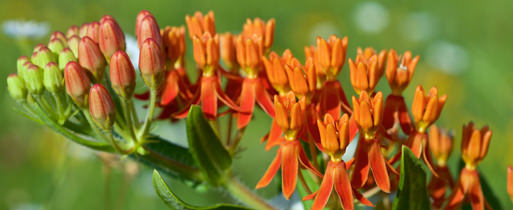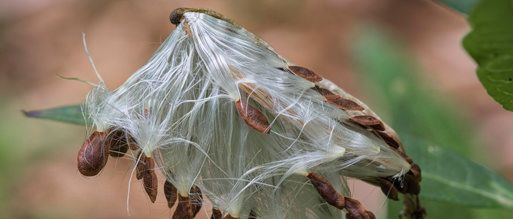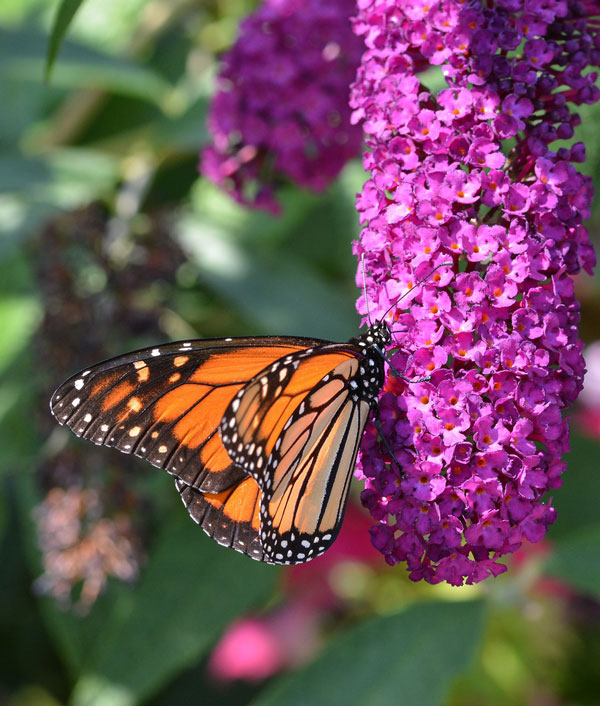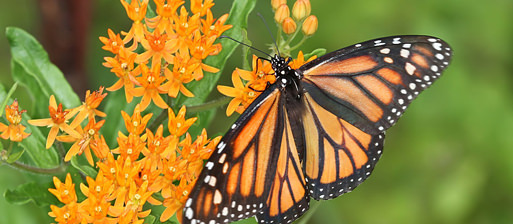
Embracing Beauty and Biodiversity with Tuberosa Asclepias
Have you ever wondered what plant can not only add a splash of vibrant color to your garden but also play a crucial role in conserving wildlife? Meet Tuberosa Asclepias, commonly known as Butterfly Weed or Milkweed. This stunning native perennial, with its vivid orange blooms and lush, lance-shaped foliage, is more than just a visual delight. It stands at the forefront of ecological gardening, offering a lifeline to the declining Monarch butterfly populations. In this exploration of Tuberosa Asclepias, we delve into its key characteristics, from its remarkable flowers and slender, fuzzy stems to its importance in companion planting and conservation efforts. Discover how this aesthetically appealing and ecologically significant plant can become a long-lasting and vibrant component of your landscape, contributing to a more diverse and sustainable garden ecosystem.
Key Characteristics of Tuberosa Asclepias:

Flowers:
The Tuberosa Asclepias' flowers are one of its most remarkable features. They form in umbel-like clusters at the top of the stems. Each flower is small, with five backward-reflexing petals, and a central crown that is elevated. The flowers are usually bright orange, sometimes with a reddish tint.
Stems:
The plant's stems are upright and slightly slender, typically branched with a somewhat hairy or fuzzy surface. They exhibit a green color, which can sometimes bear a reddish tint when exposed to direct sunlight.
Foilage:
The leaves of the Tuberosa Asclepias are lanceolate or lance-shaped, tapering to a point. They are positioned alternately along the stem. Each leaf typically measures around 2 to 5 inches in length and has a somewhat glossy surface. The leaves display a medium to dark green color.

Propagation and Maintenance:
To propagate the Tuberosa Asclepias, one can collect seeds in the fall. Once the pods have dried and started to open, harvest them and store the seeds in a cool, dry place until spring.
Companion Planting:
Tuberosa Asclepias can be planted alongside other nectar-rich flowers like Echinacea, Black-eyed Susans, and Lavender, thereby creating a more attractive habitat for pollinators. They not only mutually support growth but also contribute to a more vibrant and diverse garden ecosystem.
To ensure a season-long supply of nectar in your garden, it's a great idea to plant a variety of flowers that bloom at different times. In addition to Tuberosa Asclepias, Echinacea, Black-eyed Susans, and Lavender, here are some other nectar-rich plants you can consider:
Spring Bloomers:
- Crocus: One of the first to bloom in spring, attracting early pollinators.
- Hellebores (Lenten Rose): Blooms in late winter to early spring, offering an early nectar source.
- Primrose: Known for their early spring blooms in a variety of colors.

Early Summer Bloomers:
- Foxglove (Digitalis): These tall spires are attractive to bees and hummingbirds.
- Butterfly Bush (Buddleia): Its long, fragrant blooms, is a magnet for butterflies, including monarchs.
- Catmint (Nepeta): Offers a long blooming period and is a favorite of bees and butterflies.
- Alliums: Ornamental onions that bloom in early summer and are great for attracting bees and butterflies.
Mid to Late Summer Bloomers:
- Bee Balm (Monarda): Known for its attractive flowers and strong allure for bees and hummingbirds.
- Coneflower (Rudbeckia): Continues to provide nectar through the mid-summer months.
- Phlox: Offers a variety of colors and is a favorite among butterflies and hummingbirds.
Late Summer to Fall Bloomers:
- Goldenrod (Solidago): A late summer to fall bloomer, excellent for attracting a variety of pollinators.
- Sedum (Stonecrop): A late-blooming plant that is particularly attractive to butterflies.
- Asters: Provides a critical late-season nectar source for a wide range of pollinators.
By incorporating a mix of these plants, your garden will offer a continuous supply of nectar from early spring to late fall, supporting a diverse range of pollinators throughout the growing season. Remember to choose plants that are well-suited to your local climate and soil conditions for the best results.
Conservation Efforts:

Gardeners and schools are playing a crucial role in the conservation of milkweed, an essential plant for the survival of monarch butterflies. By planting milkweed in gardens, community spaces, and school grounds, they provide vital habitats and food sources for monarchs, particularly their caterpillars, which feed exclusively on milkweed. Schools often incorporate milkweed planting into educational programs, teaching students about ecology, the importance of biodiversity, and the specific needs of pollinators like monarch butterflies. These initiatives not only aid in the direct conservation of the species but also raise awareness and inspire broader community involvement in environmental stewardship.
With its striking flowers, drought resistance, and relevance to pollinators, Tuberosa Asclepias offers an appealing and ecologically conscious choice. With the appropriate care and maintenance, this plant can serve as a long-lasting and vibrant component of your landscape.
































































































































































































































































































































































































































































































































































































































































